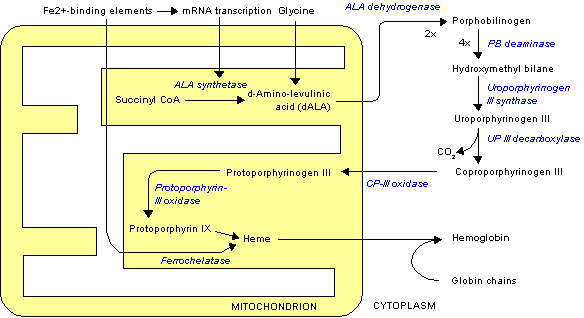WBR1007
| Author | [[PageAuthor::Vidit Bhargava, M.B.B.S [1]]] |
|---|---|
| Exam Type | ExamType::USMLE Step 2 CK |
| Main Category | |
| Sub Category | SubCategory::Dermatology |
| Prompt | [[Prompt::A 35 year old female presents with a 2 week history of sensitivity to sunlight. Whenever she steps outside unprotected she develops blistering, scarring, pigmentation on the back of her hands and face. She has also noticed increased hair growth at unusual places during these past 2 weeks. She is sexually active and takes oral contraceptives regularly. The physician orders the following labs:
Complete blood count:
LFT's
Urinalysis:
USG: Normal liver architecture The patient is diagnosed with an enzymatic defect in heme metabolism, which of the following represents the enzyme deficiency and the best treatment strategy for the same?]] |
| Answer A | [[AnswerA::Uroporphyrinogen III synthase Barrier protection from sun, activated charcoal & cholestyramine, avoid alcohol & high carbohydrate diet.]] |
| Answer A Explanation | AnswerAExp::The deficiency of the enzyme uroporphyrinogen III synthase leads to congenital erythropoietic porphyria (CEP)/Gunther's disease. It is managed by all of the above mentioned recommendations. |
| Answer B | [[AnswerB::Uroporphyrinogen III decarboxylase Stop oral contraceptives, barrier sun protection, phlebotomy or Desferoxamine & Chloroquine.]] |
| Answer B Explanation | [[AnswerBExp::The deficiency of the enzyme uroporphyrinogen III decarboxylase leads to porphyria cutanea tarda, the most common porphyria subtype. It manifests with symptoms & signs described in this case. The treatment strategy involves eliminating excess heme from the body, as well as protecting against sunlight.]] |
| Answer C | [[AnswerC::Porphobilinogen deaminase High carbohydrate diet, Hematin/heme arginate, & removing offending agents.]] |
| Answer C Explanation | AnswerCExp::The deficiency of the enzyme porphobilinogen deaminase leads to acute intermittent porphyria. It is managed by above mentioned recommendations. |
| Answer D | [[AnswerD::Protoporphyrin III oxidase Asymptomatic doesn't require treatment.]] |
| Answer D Explanation | AnswerDExp:: |
| Answer E | [[AnswerE::ALA dehydrogenase Liver transplantation]] |
| Answer E Explanation | AnswerEExp::The deficiency of the enzyme ALA dehydrogenase leads to acute porphyria, it is managed by some physicians by liver transplantation. |
| Right Answer | RightAnswer::B |
| Explanation | [[Explanation::Shown below is an image representing heme synthesis.
Each of the enzyme deficiency in this pathway is associated with a specific metabolic disorder as described above. |
| Approved | Approved::No |
| Keyword | WBRKeyword::Porphyria, WBRKeyword::Heme |
| Linked Question | Linked:: |
| Order in Linked Questions | LinkedOrder:: |
